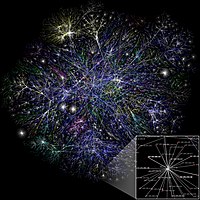
Fast Four-dimensional Cone-beam computed tomography reconstruction using deformable convolutional networks.
Sign Up to like & getrecommendations! Published in 2022 at "Medical physics"
DOI: 10.1002/mp.15806
Abstract: BACKGROUND Although 4D-CBCT is valuable to provide onboard image guidance for radiotherapy of moving targets, it requires a long acquisition time to achieve sufficient image quality for target localization. To improve the utility, it is… read more here.
Keywords: deformable convolutional; quality images; convolutional networks; feaco dcn ... See more keywords

Convolutional networks for appearance-based recommendation and visualisation of mascara products
Sign Up to like & getrecommendations! Published in 2020 at "Machine Vision and Applications"
DOI: 10.1007/s00138-019-01053-5
Abstract: In this work, we explore the problems of recommending and visualising makeup products based on images of customers. Focusing on mascara, we propose a two-stage approach that first recommends products to a new customer based… read more here.
Keywords: recommendation; convolutional networks; visualisation; product ... See more keywords

Bot prediction on social networks of Twitter in altmetrics using deep graph convolutional networks
Sign Up to like & getrecommendations! Published in 2020 at "Soft Computing"
DOI: 10.1007/s00500-020-04689-y
Abstract: In the context of smart cities, it is crucial to filter out falsified information spread on social media channels through paid campaigns or bot-user accounts that significantly influence communication networks across the social communities and… read more here.
Keywords: social network; graph convolutional; convolutional networks; network ... See more keywords

Improving short-text representation in convolutional networks by dependency parsing
Sign Up to like & getrecommendations! Published in 2018 at "Knowledge and Information Systems"
DOI: 10.1007/s10115-018-1312-9
Abstract: Automatic question answering (QA) system is the inevitable trend of future search engines. As the essential steps of QA, question classification and text retrieval both require algorithms to capture the semantic information and syntactic structure… read more here.
Keywords: convolutional networks; dependency; improving short; short text ... See more keywords

Joint extraction of entities and overlapping relations by improved graph convolutional networks
Sign Up to like & getrecommendations! Published in 2021 at "Applied Intelligence"
DOI: 10.1007/s10489-021-02667-x
Abstract: Joint extraction of entities and relations is to recognize entities and semantic relations simultaneously, which is significant for knowledge graph construction. Recently, many effective joint models use dependency trees to capture the structural information of… read more here.
Keywords: information; convolutional networks; graph convolutional; joint extraction ... See more keywords

Object tracking via inverse sparse representation and convolutional networks
Sign Up to like & getrecommendations! Published in 2017 at "Optik"
DOI: 10.1016/j.ijleo.2017.02.100
Abstract: Abstract In this paper, we present a novel object tracking method based on inverse sparse representation and convolutional networks. First, in contrast to existing trackers based on conventional sparse representation, the target template can be… read more here.
Keywords: convolutional networks; sparse representation; object tracking; inverse sparse ... See more keywords

Multi-class multimodal semantic segmentation with an improved 3D fully convolutional networks
Sign Up to like & getrecommendations! Published in 2020 at "Neurocomputing"
DOI: 10.1016/j.neucom.2018.11.103
Abstract: Abstract Semantic segmentation is an important but challenging task in the field of medical image analysis. Automatic labeling for different anatomical structures can be useful for disease diagnosis, treatment planning and development/degeneration evaluation. However, due… read more here.
Keywords: fully convolutional; convolutional networks; semantic segmentation; segmentation ... See more keywords

HpLapGCN: Hypergraph p-Laplacian graph convolutional networks
Sign Up to like & getrecommendations! Published in 2019 at "Neurocomputing"
DOI: 10.1016/j.neucom.2019.06.068
Abstract: Abstract Currently, the representation learning of a graph has been proved to be a significant technique to extract graph structured data features. In recent years, many graph representation learning (GRL) algorithms, such as Laplacian Eigenmaps… read more here.
Keywords: hypergraph laplacian; convolutional networks; graph convolutional; graph ... See more keywords

Deep network compression based on partial least squares
Sign Up to like & getrecommendations! Published in 2020 at "Neurocomputing"
DOI: 10.1016/j.neucom.2020.03.108
Abstract: Abstract Modern visual pattern recognition methods are based on convolutional networks since they are able to learn complex patterns directly from the data. However, convolutional networks are computationally expensive in terms of floating point operations… read more here.
Keywords: convolutional networks; network; least squares; accuracy ... See more keywords

Multi-Scale and Single-Scale Fully Convolutional Networks for Sound Event Detection
Sign Up to like & getrecommendations! Published in 2021 at "Neurocomputing"
DOI: 10.1016/j.neucom.2020.09.038
Abstract: Abstract Among various Sound Event Detection (SED) systems, Recurrent Neural Networks (RNN), such as long short-term memory unit and gated recurrent unit, is used to capture temporal dependencies, but it is confined in its length… read more here.
Keywords: detection; convolutional networks; temporal dependencies; fully convolutional ... See more keywords

Prediction of elastic stresses in porous materials using fully convolutional networks
Sign Up to like & getrecommendations! Published in 2021 at "Scripta Materialia"
DOI: 10.1016/j.scriptamat.2021.113805
Abstract: Abstract Machine learning (ML) models enable exploration of vast structural space faster than the traditional methods, such as finite element method (FEM). This makes ML models suitable for stochastic fracture problems in brittle porous materials.… read more here.
Keywords: prediction elastic; fully convolutional; convolutional networks; porous materials ... See more keywords